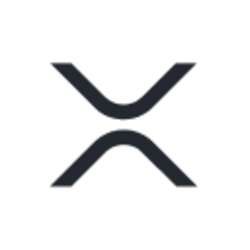XRP market potential lies in its role as a low-cost, high-speed bridge currency for cross-border payments. For long-term investors, XRP’s real-world utility via Ripple’s On-Demand Liquidity and XRPL scalability, combined with improving regulatory clarity, supports adoption-driven upside over a multi-year horizon.
-
Real-world payments utility: XRPL/ODL reduces settlement time and cost.
-
Institutional partnerships and regulatory progress are key adoption drivers.
-
Network throughput (up to ~1,500 TPS) and tokenization expand long-term use cases.
XRP market potential: Adoption, regulatory progress and Ripple’s ODL may drive long-term investor returns. COINOTAG expert analysis and evaluation.
What is XRP’s market potential for long-term investors?
XRP market potential centers on its position as a fast, low-cost bridge currency for cross-border payments. The XRPL processes transactions in seconds and Ripple’s On-Demand Liquidity (ODL) reduces pre-funded account needs, creating demand drivers that could support long-term appreciation if adoption and regulatory clarity continue.
How does Ripple’s On-Demand Liquidity affect XRP demand?
ODL lets institutions settle across fiat corridors using XRP as an intermediary, lowering capital costs. Early integrations with payment providers create incremental token demand. According to industry reports and company statements, ODL can cut settlement time from days to seconds and reduce liquidity costs for corridors that adopt it.
Why does XRPL’s technical design matter?
The XRPL is optimized for speed and low fees. With peak throughput near 1,500 transactions per second and settlement finality in seconds, the ledger supports high-frequency FX corridors and tokenization use cases. This technical profile positions XRP differently than store-of-value tokens.
When could major adoption events influence price?
Major adoption inflection points include broad bank or payment provider integrations that use ODL, regulatory rulings that enable relistings, and large-scale tokenization projects on XRPL. Each event can materially change on-chain demand and market sentiment.
Frequently Asked Questions
How does XRP differ from stablecoins for cross-border payments?
XRP is a native ledger token used as a bridge currency; stablecoins are pegged to fiat and target price stability. XRP enables instant liquidity without pre-funded fiat accounts, while stablecoins reduce FX exposure but may require counterparty trust.
Can banks use Ripple technology without buying XRP?
Yes. Some institutions adopt Ripple’s messaging and settlement tools without holding XRP. Widespread use that skips the token can limit XRP demand, while implementations that leverage ODL increase token utility.
Key Takeaways
- Utility-driven thesis: XRP’s primary value proposition is faster, cheaper cross-border settlement.
- Adoption and regulation: Institutional integrations and legal clarity are the strongest drivers of long-term demand.
- Balanced risk: Centralization critiques, competition from stablecoins/CBDCs, and volatility require cautious, diversified exposure.
Conclusion
For long-term investors, XRP market potential depends on adoption of XRPL-based settlement and continued regulatory clarity. The token’s technical efficiency and expanding use cases create plausible upside, but risks from competition and governance remain. Investors should combine on-chain metrics, regulatory monitoring, and conservative position sizing when evaluating XRP exposure.
Publication: 23 August 2025 | 18:11
Author: Alexander Stefanov, Reporter at COINOTAG
